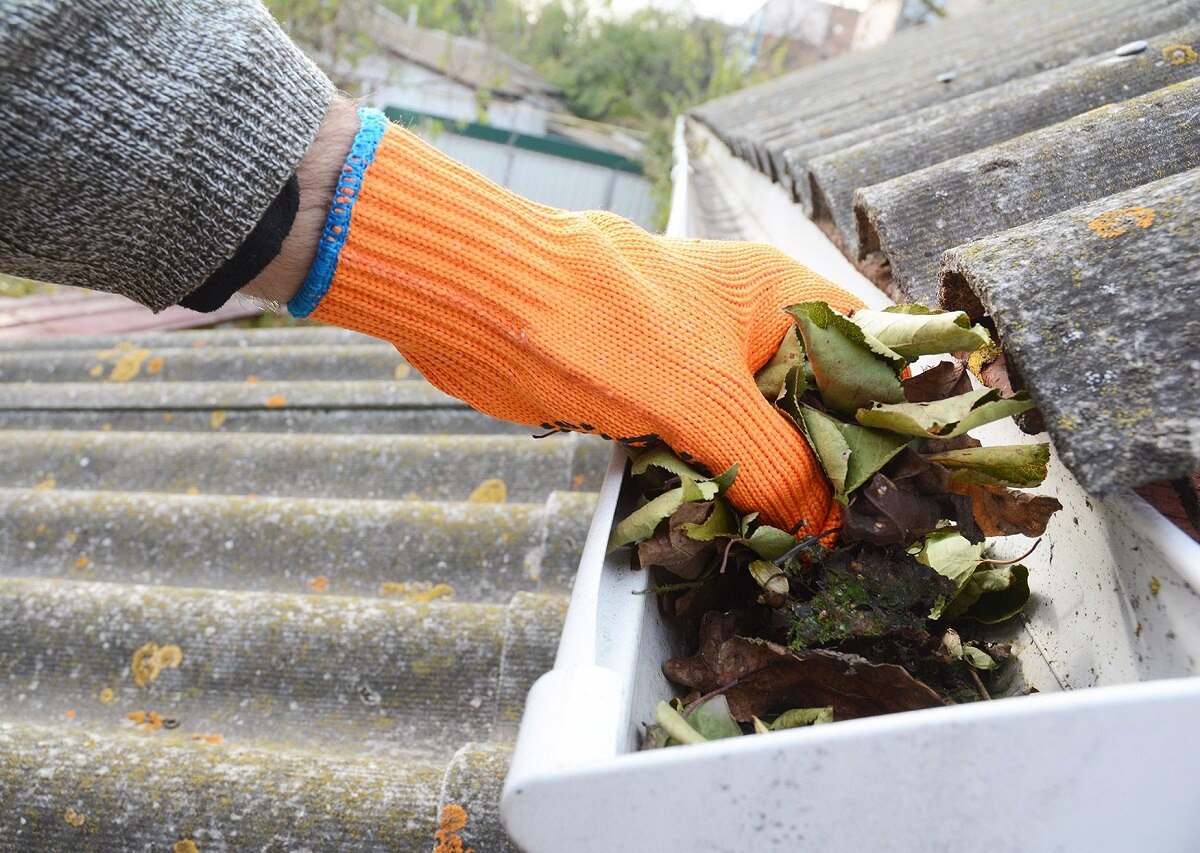

Articles
How To Keep Gutters Clean
Modified: February 23, 2024
Learn effective methods and tips to keep your gutters clean and well-maintained. Browse our comprehensive articles for expert advice on gutter cleaning and maintenance.
(Many of the links in this article redirect to a specific reviewed product. Your purchase of these products through affiliate links helps to generate commission for Storables.com, at no extra cost. Learn more)
Introduction
Gutters play a crucial role in maintaining the structural integrity of your home. They direct the flow of rainwater away from the foundation, preventing water damage and potential costly repairs. However, over time, gutters can become clogged with leaves, twigs, debris, and even pests, leading to a range of problems such as water overflow, mold growth, and even damage to your property. Therefore, it is essential to keep your gutters clean and well-maintained.
In this article, we will guide you through the process of cleaning your gutters, ensuring they remain in optimal condition to effectively manage rainwater. We will outline the necessary tools and materials, safety precautions, steps for cleaning and inspecting gutters, as well as preventative measures to minimize debris accumulation. By following these steps, you can safeguard your home and prolong the lifespan of your gutters.
Before we delve into the cleaning process, let’s emphasize the importance of keeping your gutters clean and free from debris.
Key Takeaways:
- Regularly cleaning and maintaining gutters is crucial for preventing water damage, preserving home integrity, and avoiding pest infestations. Follow safety precautions, remove debris, flush with water, inspect, and implement preventative measures.
- Prioritize safety, gather tools, remove debris, flush with water, inspect, and implement preventative measures to maintain clean and functional gutters. Protect your home from water damage and preserve its structural integrity.
Read more: How To Keep Gutters From Clogging
The Importance of Keeping Gutters Clean
Regularly cleaning your gutters is critical for several reasons. Let’s explore the key reasons why you should make gutter maintenance a priority:
- Prevents Water Damage: When gutters become clogged, rainwater can overflow and spill onto your roof, siding, and foundation. This can lead to water damage, including rotting wood, mold growth, and even foundation issues. By keeping your gutters clean, you ensure that rainwater flows smoothly away from your home, preventing water-related issues.
- Preserves the Structural Integrity of Your Home: Clogged gutters can contribute to the deterioration of your home’s structure. When water is not properly redirected, it can seep into your walls and foundation, weakening their stability over time. By maintaining clean gutters, you protect the structural integrity of your home, potentially saving yourself from costly repairs in the future.
- Avoids Pest Infestations: Debris-filled gutters can become attractive nesting sites for pests, such as birds, squirrels, and mosquitoes. These pests can cause damage to your gutter system and create unsanitary conditions. By regularly cleaning your gutters, you minimize the chances of pest infestations and the associated problems they bring.
- Prevents Ice Dams: In colder climates, clogged gutters can contribute to the formation of ice dams, which occur when melted snow refreezes at the edge of the roof, obstructing the proper flow of water. Ice dams can lead to water seepage into your home, causing interior damage and mold growth. By keeping your gutters clean, you reduce the likelihood of ice dams forming and prevent subsequent damage.
- Extends the Lifespan of Your Gutters: Regular maintenance and cleaning of your gutters can significantly extend their lifespan. When debris accumulates in gutters, it can cause rust, corrosion, and structural damage. By keeping gutters clean, you preserve their functionality and ensure they continue to effectively divert rainwater away from your home.
By understanding the importance of keeping gutters clean, you can make informed decisions about maintaining your gutter system and ultimately protect your home from costly damages and potential risks.
Tools and Materials Needed
Before getting started with gutter cleaning, gather the necessary tools and materials to ensure a smooth and efficient process. Here’s a list of items you’ll need:
- Ladder: A stable and secure ladder is essential for accessing your gutters. Choose a ladder that is the appropriate height for your home and follow proper ladder safety guidelines.
- Gloves: Wear waterproof gloves to protect your hands from debris, sharp objects, and potential pests that may be hiding in your gutters.
- Gutter Scoop or Trowel: Use a gutter scoop or trowel to remove large debris such as leaves, twigs, and dirt from your gutters. This tool will make the cleaning process much easier and more efficient.
- Bucket: Have a bucket or a sturdy bag on hand to collect the debris you remove from the gutters. This will help keep your work area tidy and prevent debris from falling onto your landscaping or foundation.
- Garden Hose or Pressure Washer: You’ll need a garden hose with a spray nozzle attachment or a pressure washer to flush out remaining debris and ensure your gutters are clear of any blockages.
- Gutter Brush or Small Bristle Brush: To remove stubborn debris or built-up dirt, a gutter brush or small bristle brush can be useful. This tool can help you scrub away any residue or grime that may be sticking to the gutters.
- Safety Goggles: Protect your eyes from debris and splashing water by wearing safety goggles throughout the gutter cleaning process.
- Caulking Gun and Sealant: Check your gutters for any leaks or gaps. If you notice any, you’ll need a caulking gun and gutter sealant to repair them and maintain the integrity of your gutter system.
- Safety Harness: If your home has a steep roof or multiple stories, consider using a safety harness to ensure your personal safety while accessing and working on your gutters.
Having these tools and materials readily available will make the gutter cleaning process more efficient and effective. It’s important to prioritize safety and use the appropriate tools to ensure a successful and accident-free gutter cleaning experience.
Step 1: Safety Precautions
Prioritizing safety is paramount when it comes to cleaning gutters. Follow these necessary safety precautions to protect yourself and ensure a safe working environment:
- Use a Stable Ladder: Always use a sturdy and stable ladder when accessing your gutters. Ensure that it is properly positioned on a flat and level surface. If necessary, use ladder stabilizers or leg levelers to provide additional stability.
- Inspect the Ladder: Before climbing onto the ladder, carefully inspect it to ensure it is in good condition. Check for any damaged or missing parts, such as rungs or braces. Avoid using a ladder that is wobbly or in disrepair.
- Wear Protective Gear: Put on a sturdy pair of waterproof gloves to protect your hands from debris, sharp objects, and potential pests. Wearing safety goggles is also important to shield your eyes from any flying debris or water splashes.
- Inform Someone: Before starting your gutter cleaning task, let someone know about your plans. This way, if an accident were to occur, someone will be aware of your whereabouts and able to assist if needed.
- Take Breaks: Cleaning gutters can be physically demanding. Take regular breaks to avoid fatigue and maintain focus. Stay hydrated by drinking plenty of water to prevent dehydration.
- Be Mindful of Power Lines: Pay attention to the location of power lines near your gutters. Keep your ladder and tools a safe distance away to prevent accidental contact with live wires.
- Use a Safety Harness: If you are working on a high roof or multiple-story building, consider using a safety harness. This will provide an extra layer of protection in case of a fall. Familiarize yourself with how to properly use and secure the harness before starting.
- Work with a Spotter: When working on a ladder, it can be helpful to have a spotter nearby to hold the ladder and assist you. A spotter can also alert you to any potential hazards or give you a hand when needed.
- Follow Weather Conditions: Avoid gutter cleaning during inclement weather conditions, such as heavy rain, strong winds, or lightning storms. Wet and slippery surfaces can increase the risk of accidents.
By adhering to these safety precautions, you can minimize the risks associated with cleaning gutters and ensure a safe and accident-free experience. Always prioritize your well-being and take every necessary step to protect yourself throughout the entire process.
Step 2: Removing Debris from Gutters
Once you’ve taken the necessary safety precautions, it’s time to start removing the debris from your gutters. Follow these steps to effectively clear out the accumulated leaves, twigs, and other debris:
- Start at a Downspout: Begin your cleaning process at a downspout. This will ensure that any debris you remove will flow out of the gutter system easily.
- Use a Gutter Scoop or Trowel: With your gloves on, use a gutter scoop or trowel to scoop out large debris from the gutters. Start at the downspout and work your way along the length of the gutter. Place the debris directly into a bucket or bag, or drop it onto a tarp or drop cloth for easy cleanup later.
- Remove Stubborn Debris: For smaller debris or hard-to-reach areas, use a gutter brush or a small bristle brush to dislodge and remove any remaining debris. Make sure to scrub carefully to avoid any damage to the gutter itself.
- Clear Downspouts: Once you’ve cleared out the larger debris, check the downspouts for any clogs. You can use a small hand trowel or a plumbing snake to carefully remove any blockages and ensure proper water flow.
- Work in Sections: Divide your gutter cleaning into manageable sections to avoid overwhelming yourself or leaving any areas untouched. This will help you maintain a systematic approach and ensure thorough cleaning.
- Frequently Check for Leaks or Damages: As you clean, keep an eye out for any leaks, holes, or damage to your gutters. Note any areas that require repairs or attention.
Remember, the key to removing debris from gutters is to work methodically and thoroughly. Take your time to clear out as much debris as possible, ensuring that water can flow freely through the gutter system.
Once you’ve removed the majority of the debris from your gutters, move on to the next step: flushing the gutters with water to ensure they are entirely clear of any remaining residue.
Regularly clean your gutters at least twice a year to prevent clogs and water damage. Use a gutter scoop or trowel to remove debris and flush with a hose to ensure proper drainage.
Read more: How To Keep Gutters From Freezing
Step 3: Flushing Gutters with Water
After successfully removing the debris from your gutters, the next step is to flush them with water. This will help dislodge any remaining dirt, small fragments, or build-up that may be clinging to your gutters. Follow these steps to effectively flush your gutters using water:
- Attach a Spray Nozzle or Pressure Washer: If you are using a garden hose, attach a spray nozzle with adjustable settings to provide different water pressures. Alternatively, if you have access to a pressure washer, use the appropriate nozzle for cleaning gutters.
- Start at the Opposite End of the Downspout: Begin by spraying water into the gutters at the opposite end of the downspout from where you started the debris removal. This will ensure that any remaining debris is pushed towards the downspout.
- Work in Short Sections: Move along the length of the gutter system, working in small sections. Use a side-to-side motion while spraying the water to dislodge any built-up dirt or residue.
- Direct the Water Towards the Downspout: Ensure that the water is flowing towards the downspout as you flush the gutters. This will help flush out any remaining debris and prevent any blockages further down the system.
- Check Downspouts for Proper Water Flow: As you flush the gutters, periodically check the downspouts to ensure that water is flowing freely. If you notice any slow drainage or blockages, use a plumber’s snake or a small hand trowel to clear the obstruction.
- Inspect the Gutter System: While flushing the gutters, closely inspect the entire system for any leaks, damage, or sagging areas. Take note of any repairs that need to be addressed after the cleaning process.
- Continue until Water Runs Clear: Keep flushing each section of the gutters until the water runs clear, indicating that the gutters are free from debris and dirt. Pay extra attention to corners and joints where debris tends to accumulate.
Flushing the gutters with water is a crucial step to ensure that your gutter system is completely clear of any remaining debris. This process helps maintain optimal water flow and prevents potential clogs or blockages.
Once you’ve finished flushing the gutters, it’s time to move on to inspecting and performing any necessary repairs on your gutter system.
Step 4: Inspecting and Repairing Gutters
After cleaning and flushing your gutters, it is important to thoroughly inspect them for any signs of damage or issues that may require repairs. Regular maintenance and timely repairs can help prolong the lifespan of your gutter system and prevent water damage to your home. Follow these steps to inspect and repair your gutters:
- Check for Leaks: Look for any signs of leakage or water dripping from the gutters. Pay close attention to joints, seams, and connections. Leaks can cause water damage to your home, so it is crucial to address them promptly.
- Inspect for Rust or Corrosion: Examine the gutters for any signs of rust or corrosion. These can weaken the integrity of the gutters and lead to structural damage. Consider replacing any heavily rusted sections of the gutter system.
- Look for Sagging or Misaligned Gutters: Check if the gutters are properly aligned and securely attached to the fascia board. Sagging gutters can impede water flow and cause pooling, leading to potential damage. Adjust or reinforce any areas that are sagging or misaligned.
- Clean and Unclog Downspouts: Ensure that the downspouts are clear of any blockages and debris. Use a plumber’s snake or a small hand trowel to remove any clogs. Trim any overhanging branches or vegetation that may obstruct the proper flow of water.
- Look for Gaps or Loose Fasteners: Check for any gaps between the gutters and the fascia board. Tighten any loose fasteners and seal any gaps with a compatible gutter sealant or caulking. This will help prevent water from seeping behind the gutters.
- Consider Installing Gutter Guards: Gutter guards are a beneficial addition to prevent debris from accumulating and clogging the gutters. Explore different options such as mesh screens or gutter covers that fit your gutter system.
- Trim Nearby Trees: Overhanging branches can drop leaves and debris onto your gutters, contributing to clogs. Trim branches that are in close proximity to your gutters to minimize debris accumulation.
- Document Repairs and Maintenance: Keep a record of any repairs performed, including dates and details. This documentation will help you track the maintenance history of your gutters and provide insights for future cleaning and maintenance tasks.
Regular inspection and timely repairs are vital to maintaining the functionality and integrity of your gutter system. By identifying and addressing potential issues early on, you can prevent more significant damage and extend the lifespan of your gutters.
Once you’ve completed the inspection and necessary repairs, it’s time to implement preventative measures to help keep your gutters clean for longer periods.
Step 5: Preventative Measures for Keeping Gutters Clean
After investing time and effort into cleaning and inspecting your gutters, it’s important to implement preventative measures to keep them clean for longer periods. By taking proactive steps, you can reduce the frequency of gutter cleaning and maintain optimal gutter functionality. Follow these preventative measures to minimize debris accumulation in your gutters:
- Install Gutter Guards: Consider installing gutter guards or leaf screens to prevent leaves, twigs, and other debris from entering your gutters. These protective coverings allow water to pass through while keeping out unwanted debris.
- Regularly Trim Trees and Vegetation: Trim back overhanging branches and vegetation near your gutters to minimize the amount of debris that falls into them. This reduces the potential for clogs and lessens the amount of maintenance required.
- Clean Surrounding Areas: Keep the surrounding areas of your gutters clean and free from debris. Remove leaves, sticks, and other debris from your roof, nearby trees, and landscaping to prevent them from being washed into the gutters during rainstorms.
- Regularly Inspect and Maintain: Conduct periodic visual inspections of your gutters to identify any signs of damage or clogs. Clean your gutters at least twice a year, or more frequently if you live in an area with high foliage or heavy rainfall.
- Flush with Water: Even when your gutters appear clean, it’s beneficial to flush them with water periodically. This helps remove any residual dirt or debris that may have accumulated over time.
- Keep Gutters Clear of Snow and Ice: During winter months, it’s important to remove snow and ice from your gutters to prevent the formation of ice dams. Use a roof rake or gutter rake to carefully clear off accumulated snow.
- Check and Maintain Downspouts: Regularly check your downspouts for clogs or obstructions. Clear them out using a plumber’s snake or hose attachment to ensure that water can flow freely away from your home.
- Consider Professional Gutter Cleaning: If you prefer to leave the task to the experts, schedule professional gutter cleanings at least once a year. Professionals have the knowledge, experience, and equipment to thoroughly clean and inspect your gutters.
By implementing these preventative measures, you can significantly reduce the risk of clogged gutters and minimize the maintenance required throughout the year. Taking proactive steps to keep your gutters clean will not only safeguard your home but also save you time and effort in the long run.
With these preventative measures in place, you can enjoy the benefits of a well-maintained gutter system and ensure the longevity of your home’s foundation and exterior.
Conclusion
Maintaining clean and functional gutters is essential for the overall health and longevity of your home. By following the steps outlined in this article, you can effectively clean and maintain your gutters, protecting your property from water damage and potential costly repairs.
Start by prioritizing safety and gathering the necessary tools and materials for the task. Take the time to remove debris from your gutters, ensuring they are clear of any blockages. Flushing the gutters with water will further clean out any remaining residue, allowing for optimal water flow.
During the cleaning process, it is important to inspect your gutters for any signs of damage or areas that require repair. Timely maintenance and addressing issues promptly can help prevent further damage and extend the lifespan of your gutter system.
Implementing preventative measures such as installing gutter guards, regularly trimming trees, and keeping the surrounding areas clear of debris will help minimize the accumulation of debris in your gutters. Periodic maintenance, including inspecting and maintaining downspouts, will contribute to the overall effectiveness of your gutter system.
By taking a proactive approach to gutter maintenance and following these steps, you can ensure that your gutters remain clean and functional, protecting your home from water damage and preserving its structural integrity.
Remember, if you are unsure about completing these tasks yourself or if your gutters require extensive repair, it is always advisable to seek professional assistance. Professionals have the expertise and tools to effectively clean and maintain your gutters, ensuring that your home remains protected.
With proper gutter maintenance, you can have peace of mind, knowing that your home is well-protected from the potentially damaging effects of water infiltration and clogged gutters. So, take the time to care for your gutters, and your home will thank you for it in the long run.
Frequently Asked Questions about How To Keep Gutters Clean
Was this page helpful?
At Storables.com, we guarantee accurate and reliable information. Our content, validated by Expert Board Contributors, is crafted following stringent Editorial Policies. We're committed to providing you with well-researched, expert-backed insights for all your informational needs.
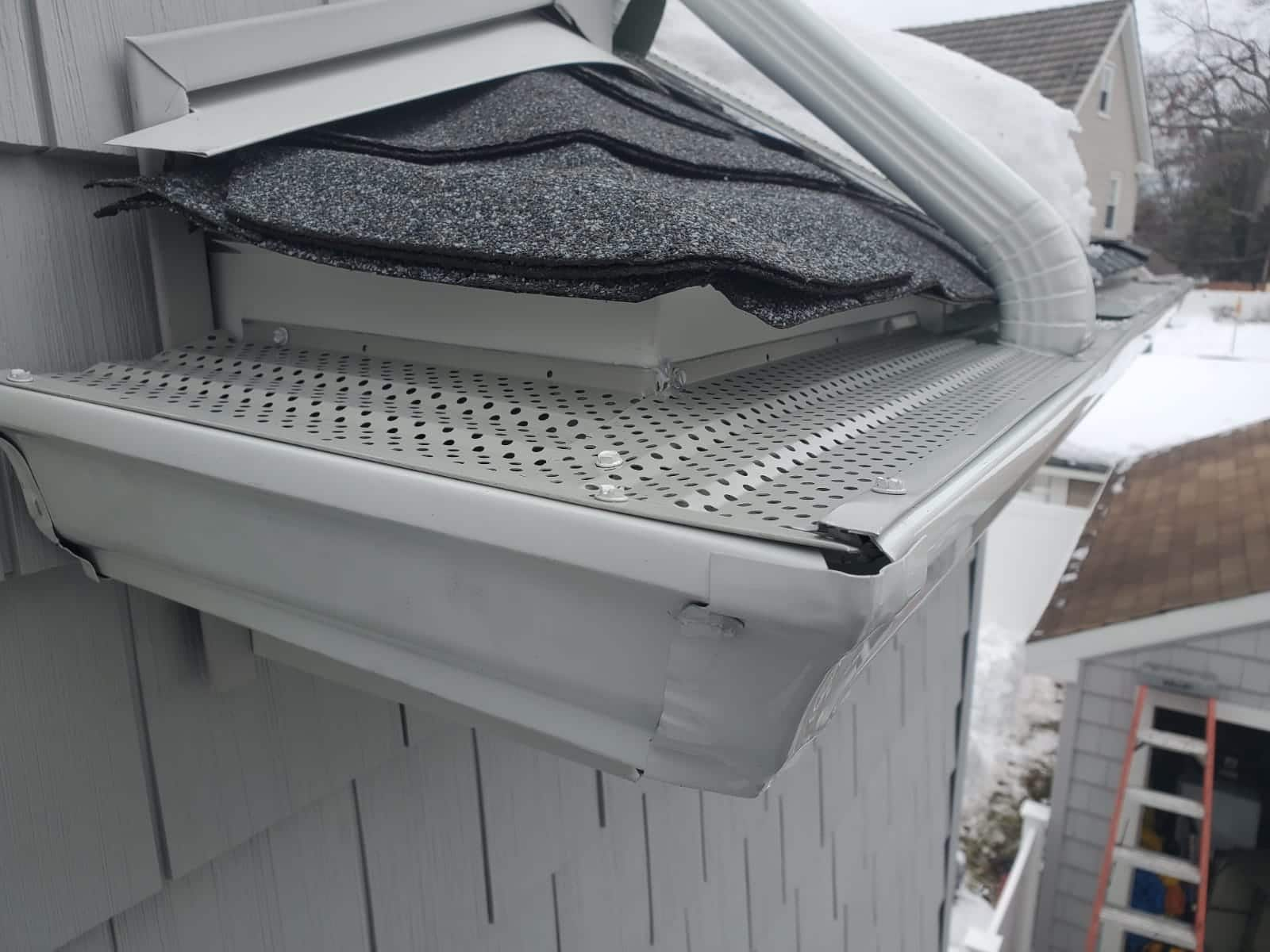
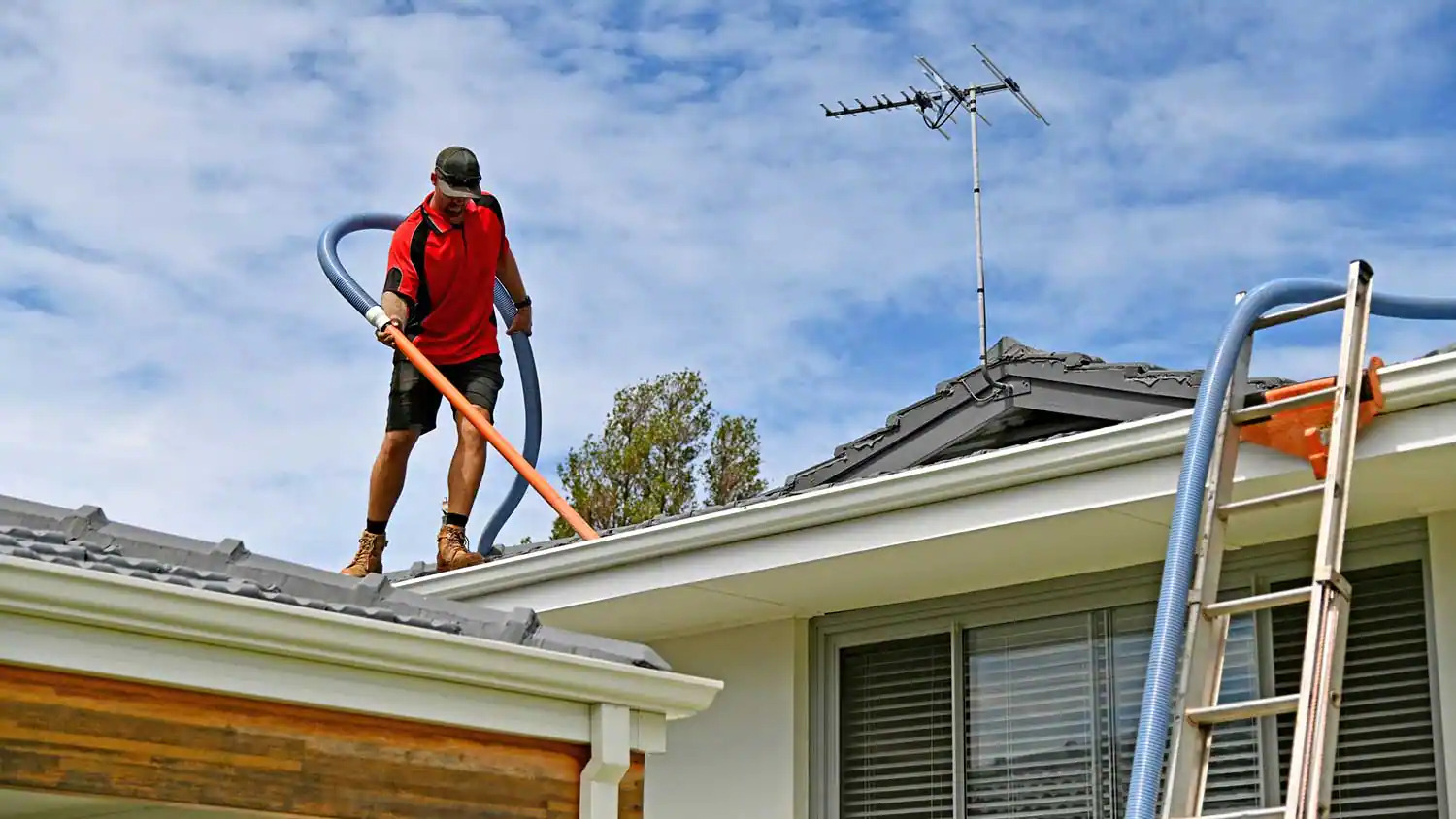
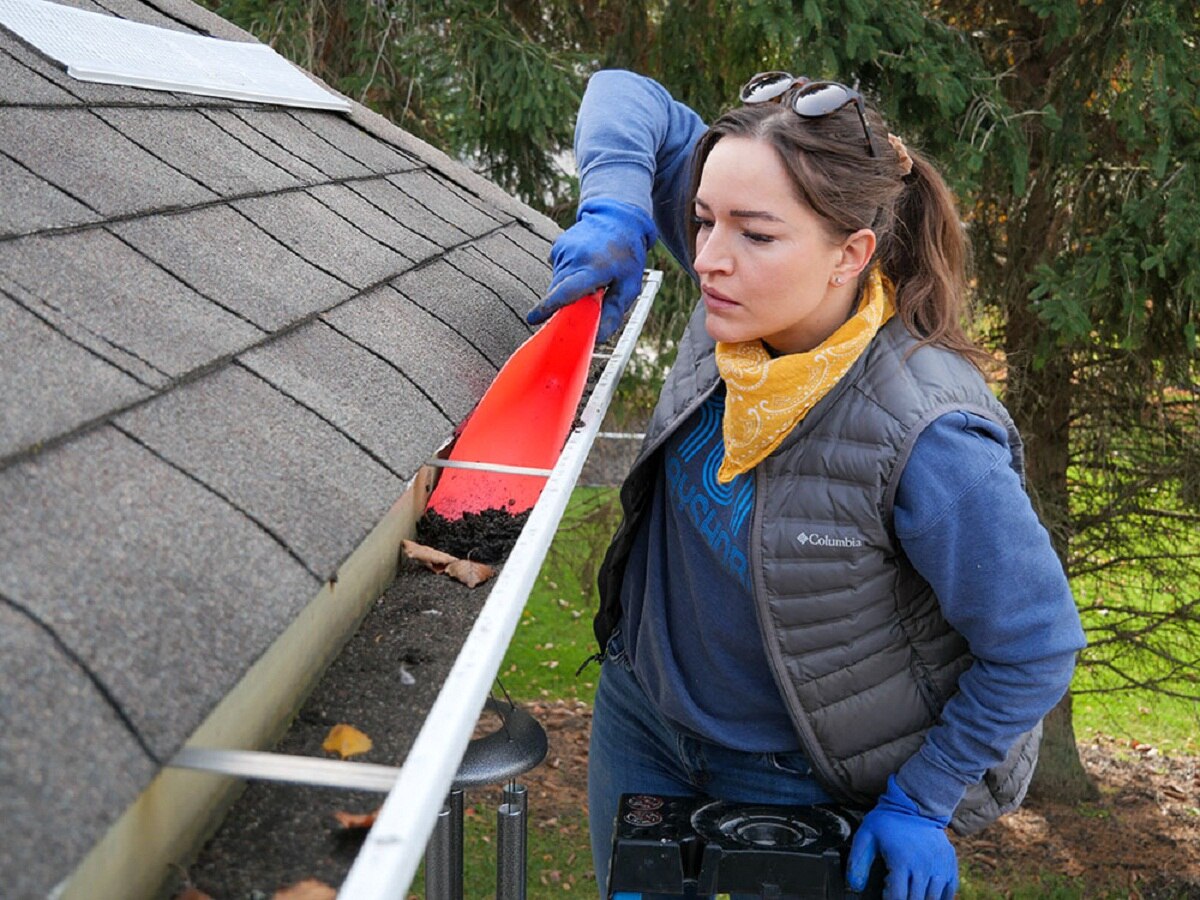
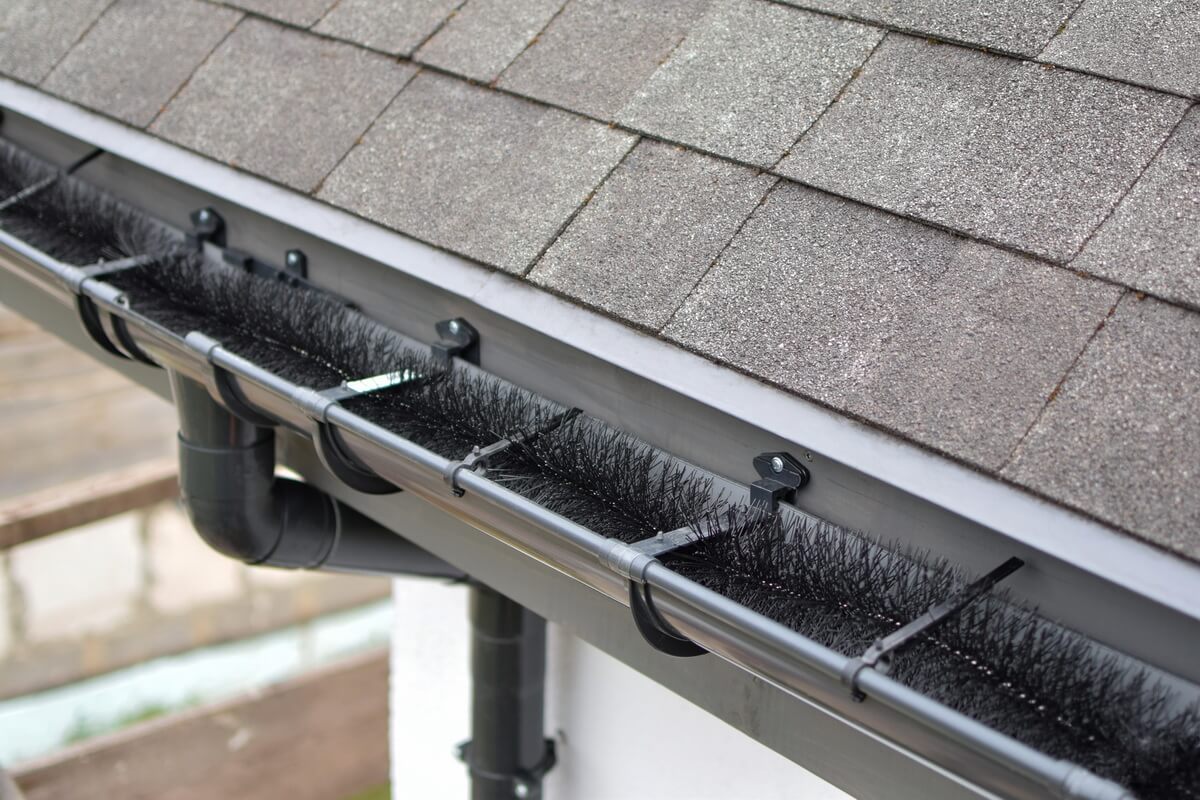

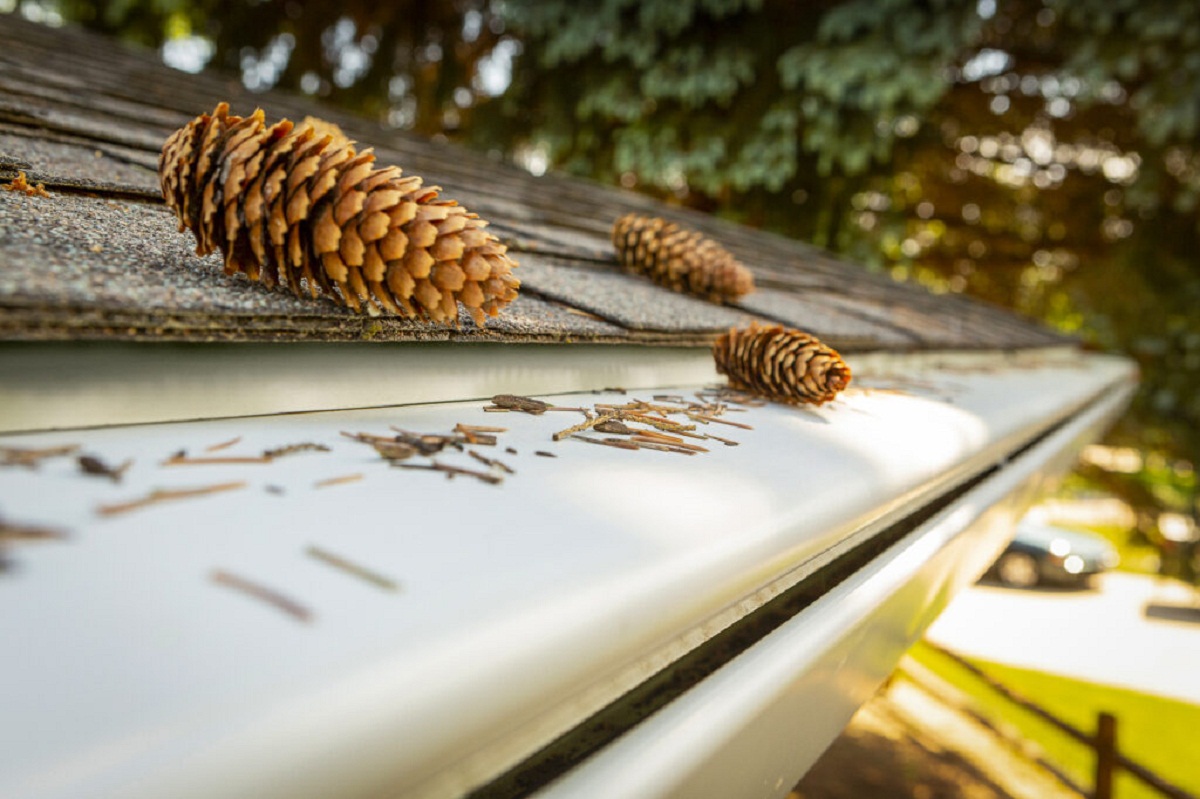
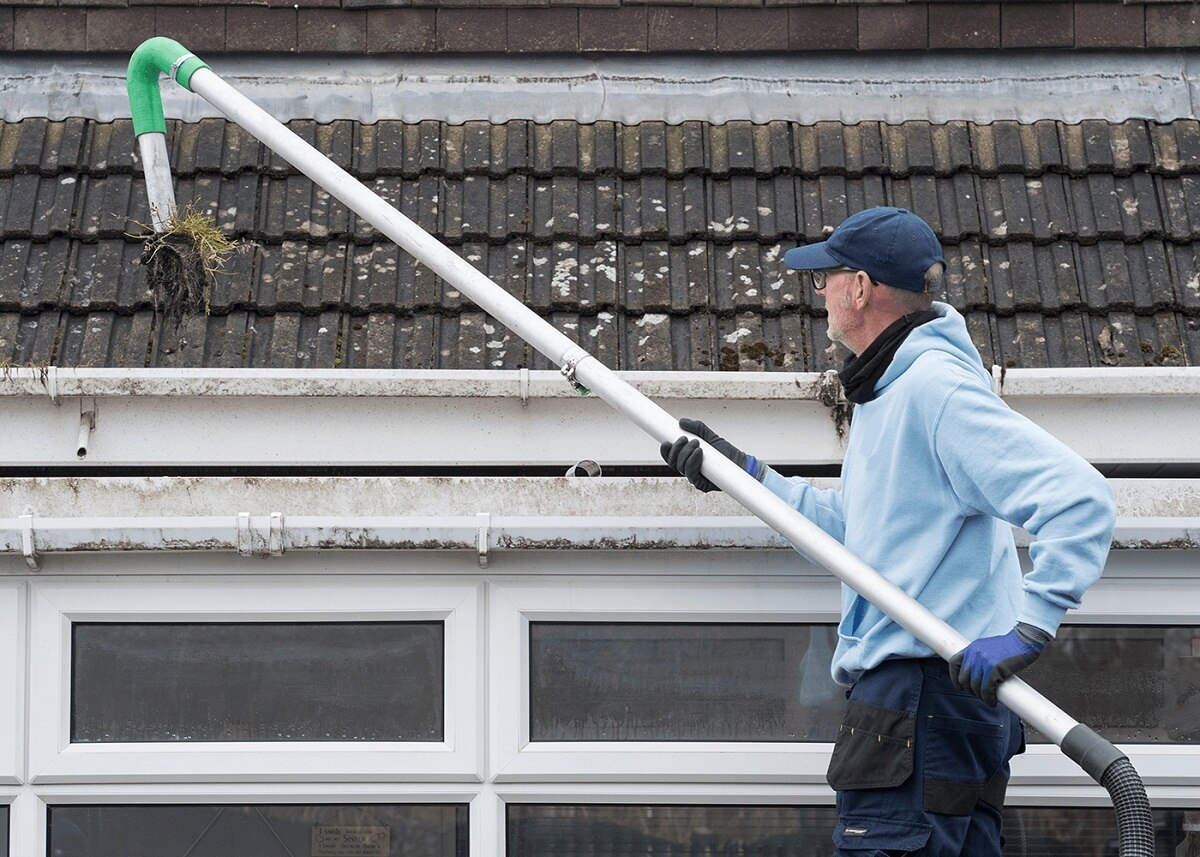
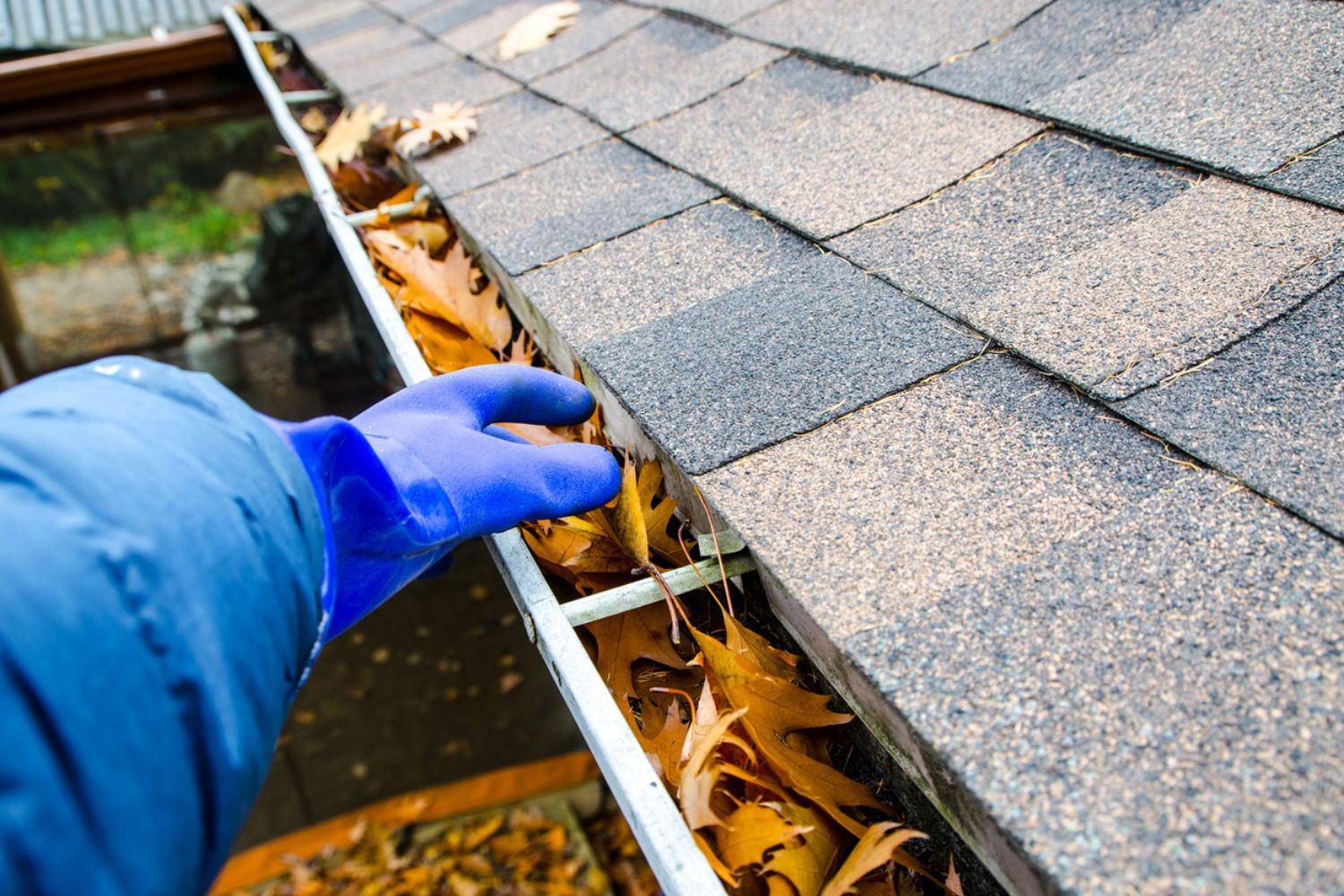
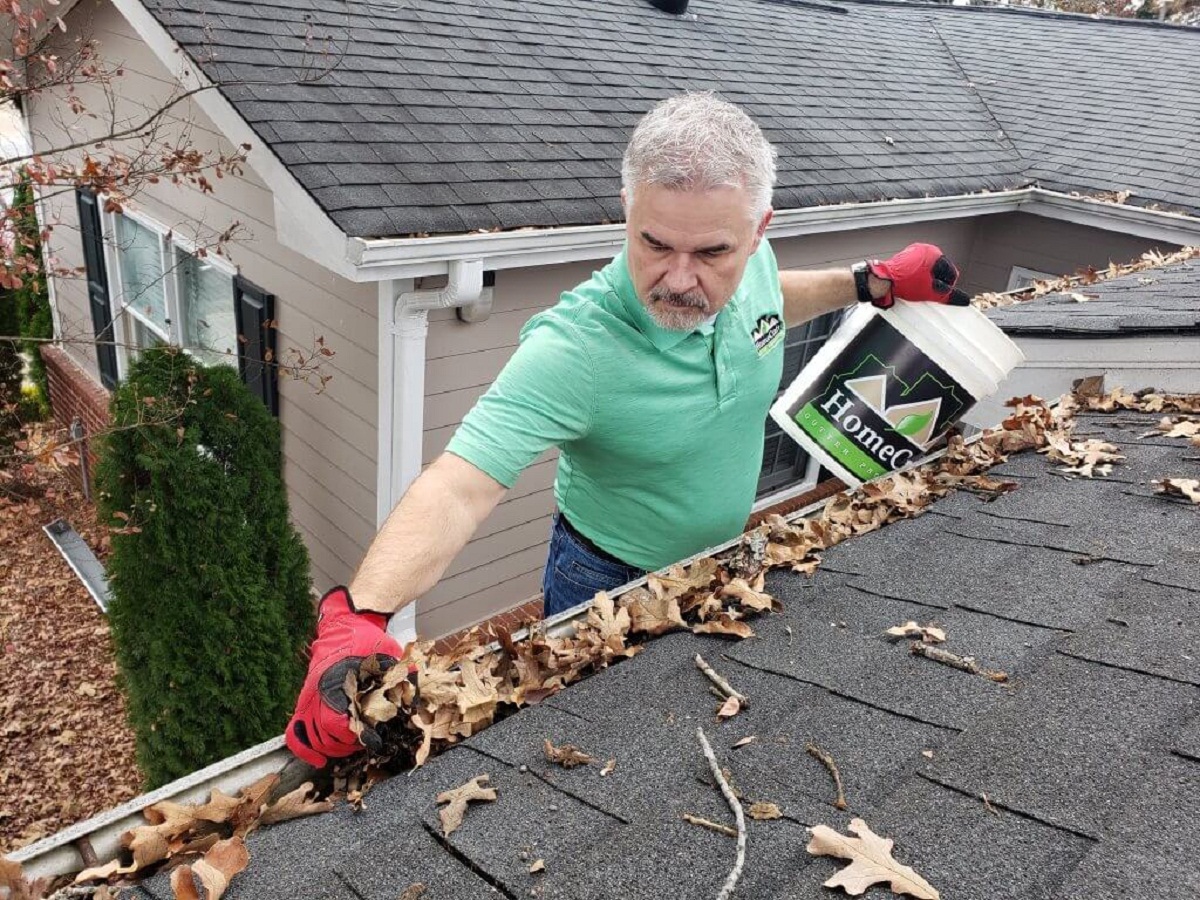
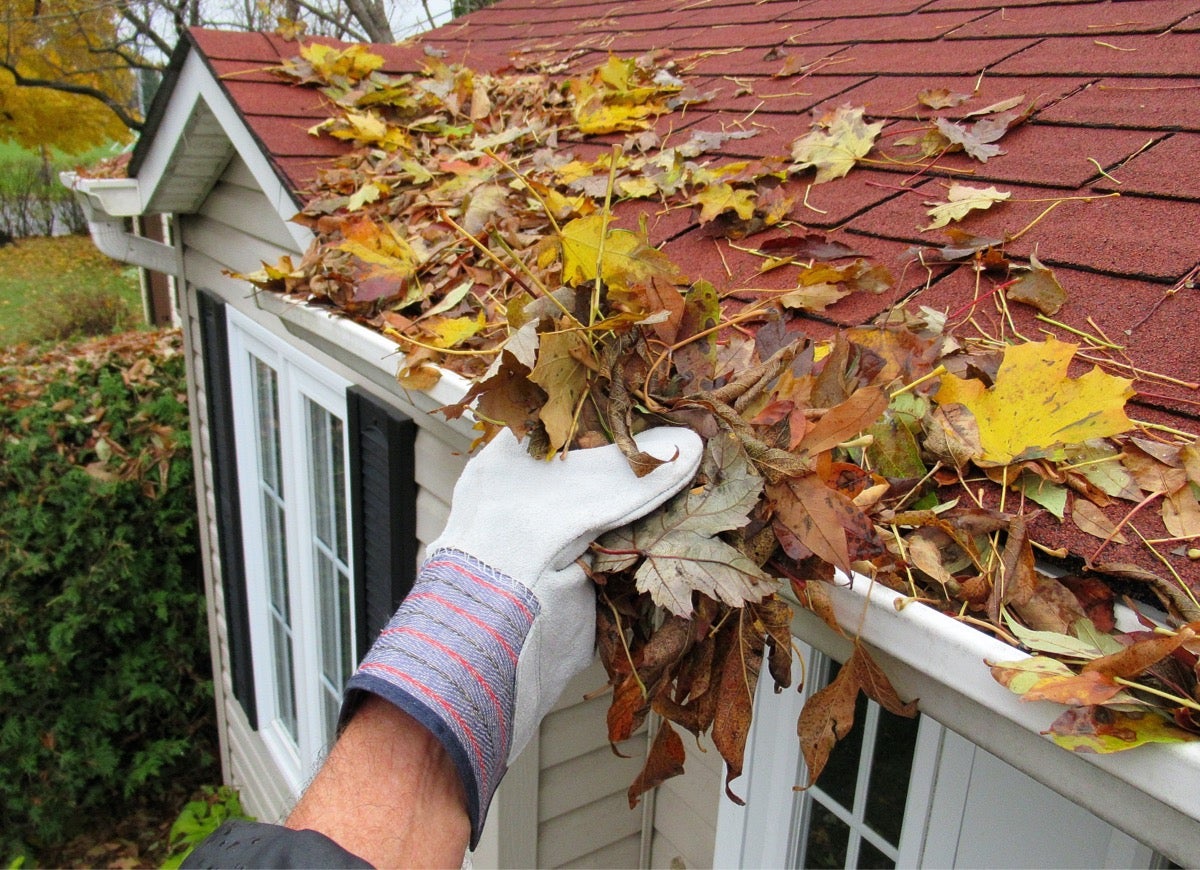
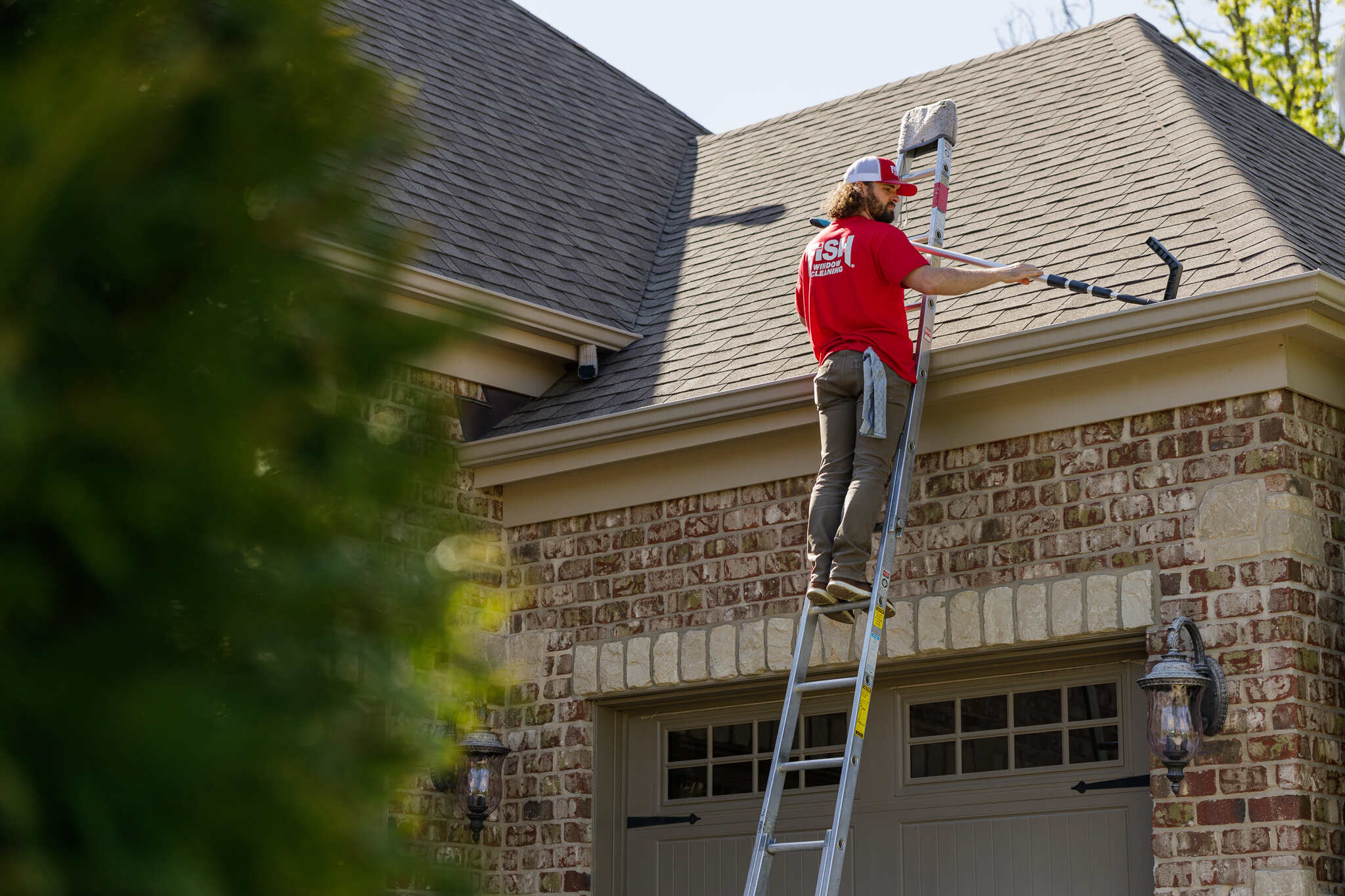
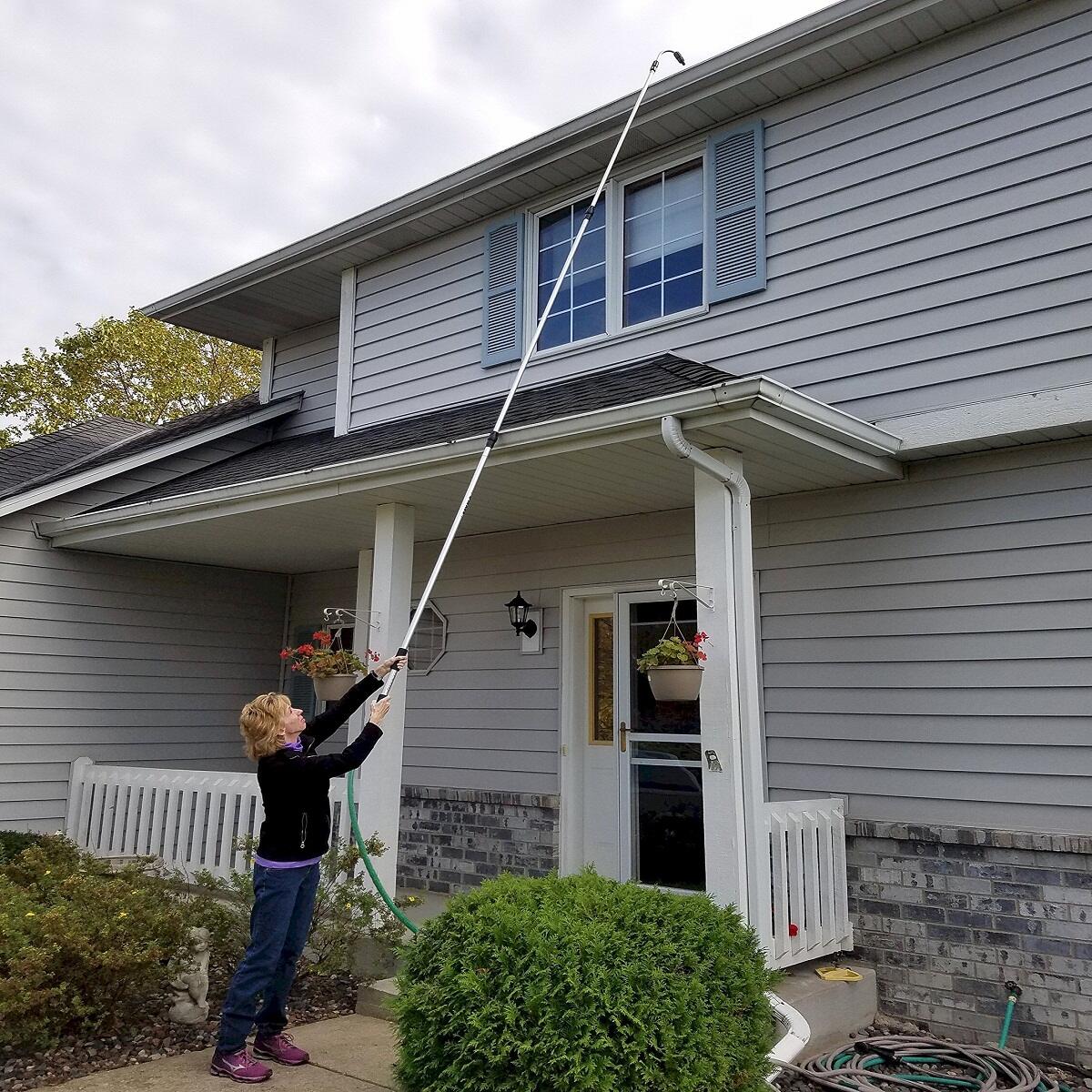
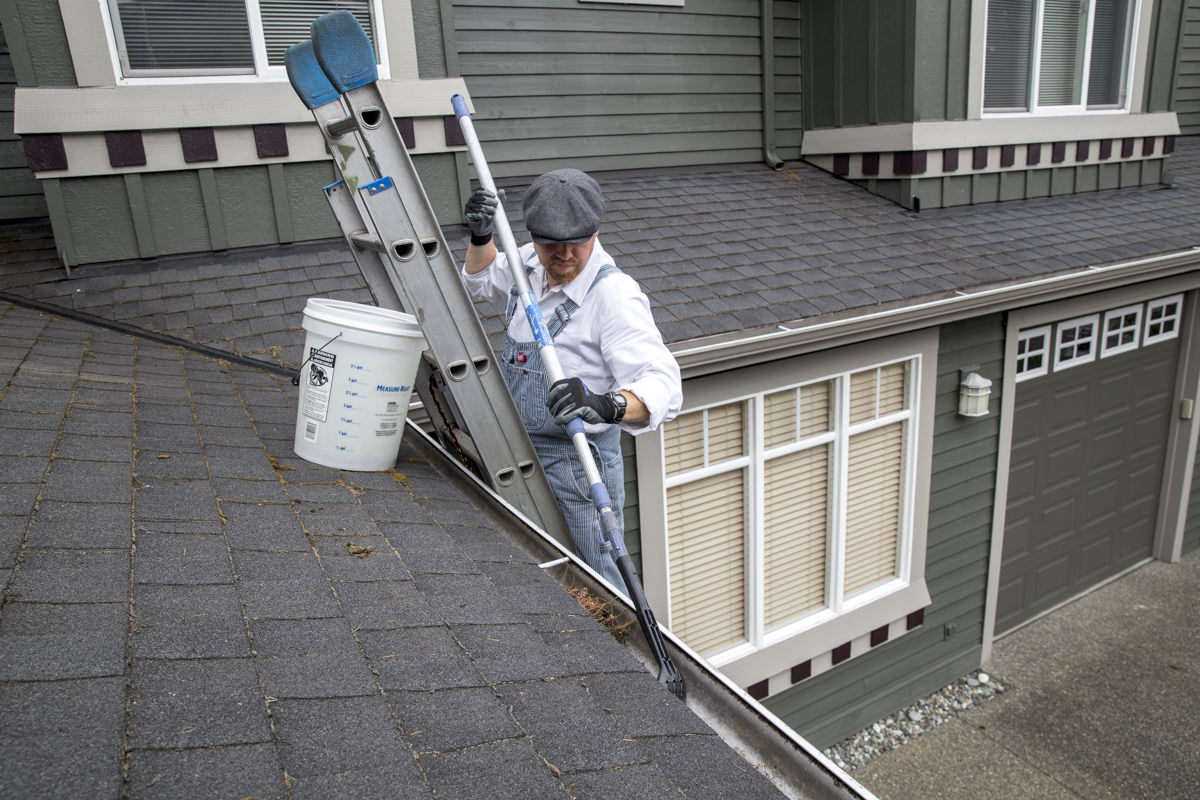


0 thoughts on “How To Keep Gutters Clean”